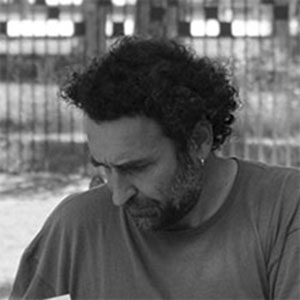
The Dredge in the context of the first peninsular Neolithic communities

The relevance of the project lies in the exceptional conservation conditions of the La Draga site and its relevance to the study of the neolitization process. The site has provided a unique record for the study of agricultural and livestock practices, as well as the technical processes and technological development of the first peasant communities of the Neolithic period. It has also allowed to obtain high resolution data on the environment and the impact that the arrival of these populations had on it in the Iberian Peninsula. The La Draga site is an exceptional case to study this period for several reasons. Because of its age, which places it among the oldest Neolithic sites in the northeast of the Peninsula. For the fact that it is an open-air settlement with an important extension and clear continuity of habitation. Finally, for providing a highly diversified archaeological record and with a state of conservation of organic matter unprecedented and unique in Europe.
Period
The chrono-cultural period covered by the project is the ancient Neolithic (facies Cardial) period of the Western Mediterranean. The radiometric data obtained by C14 frame the occupation of the settlement in the second half of the 6th millennium BC, with an initial phase between 5,300-5,100 BC and another more recent one between 5,100 and 4,900 BC.
Institution
Milà i Fontanals – CSIC (IMF-CSIC, Barcelona);
Museu d’Arqueologia de Catalunya (MAC, Barcelona);
Universitat Autònoma de Barcelona (UAB);
Museo Arqueològic Regional de Banyoles (MACB).
Web and social networks
http://www.asd-csic.es/
http://www.mac.cat/
https://www.uab.cat/web/seu-de-la-draga/la-seu-de-la-draga-1345766245716.html
https://www.museusdebanyoles.cat/arqueologic
https://twitter.com/La_draga_site
https://www.instagram.com/la_draga_site/
https://www.facebook.com/archaeologyladraga/
YOUTUBE: La Draga en càpsules
Location
PRINCIPAL RESEARCHERS

Antoni Palomo
Antoni Palomo holds a PhD in prehistoric archaeology from the Universidad Autónoma de Barcelona (UAB). He is an associate professor at the UAB and director of the company Arqueolític. He has worked as a technician contracted by the CSIC-IMF of Barcelona, CSIC-CCHS of Madrid and the UAB. He is currently co-directing the research project of the Neolithic lacustrine site of La Draga. He works on the study of recent prehistory. He is a specialist in lithic technology studies, especially from an experimental perspective. He is currently developing, among others, the following experimental programs: analysis of carving techniques, production and use of polished tools and production and use of Neolithic projectiles.

Raquel Piqué
Raquel Piqué is a lecturer in the Department of Prehistory at the UAB. Piqué received her PhD in History from the UAB in 1997. Since 2005 she has been a professor in the Department of Prehistory where she directs the archaeobotanical laboratory. Her research focuses on the management of forest resources in prehistory and the transformation of the landscape of hunter-gatherers and early agricultural societies. She has been principal investigator in eleven projects funded by national research programs and has participated in more than twenty-five national and international programs.
HER main research focus has been the social organization and the use of resources among the first agricultural societies in the NE of the Iberian Peninsula. Since 2008 she has been carrying out research at the early Neolithic site of La Draga (Banyoles) (5300-4900 cal BCE), where the exceptional preservation of organic matter makes this site an exceptional case to explain the process of Neolithification in the north-east of Iberia.

Xavier Terradas
He is currently a scientific researcher at the Consejo Superior de Investigaciones Científicas of the Mila & Fontanals Institute (Archaeology of Social Dynamics group) in Barcelona. He has carried out several research projects in the framework of various calls of the National Plan of the Ministry of Economy, Industry and Competitiveness, in addition to other projects in regional calls, having been recognized four tranches of research activity by the National Commission for the Evaluation of Research Activity. (CNEAI).
His scientific work has focused mainly on the study of the socio-economic strategies carried out by the last Mesolithic hunter-gatherer groups and the first Neolithic peasant communities, as well as their dynamics of change, in the western Mediterranean basin. The main reference point for this research is the lake settlement of La Draga (Banyoles, Girona) and the Neolithic process in the northeast of the Iberian Peninsula.
His speciality is the study of technological innovations and technical skills in Prehistory, especially those related to the production of lithic tools. During the last few years, he has been carrying out research on the availability of raw materials and the quarrying activities developed in their provisioning. All this has been carried out within the framework of the LITOcat project, based on the constitution of a collection of siliceous rocks for the Northeast of the Iberian Peninsula.
RESULTS
The results of this project have meant a clear advance in scientific knowledge about the Neolithic:
- Better knowledge about Neolithic agriculture. We have one of the samples that provide a better knowledge of the agricultural practices of the beginning of the Neolithic in Europe. In addition to the large quantity of cereal seeds, among which naked wheat predominates, examples of agricultural tools such as digging sticks and sickles have been preserved. For the first time in Europe it has been possible to document directly from the archaeological record of the ancient Neolithic the work of the land with digging sticks and the type of harvesting practiced, aspects of agriculture that were usually inferred from ethnographic parallels.
- Better characterization of the cattle practices in the beginning of the Neolithic. The great quality and abundance of the faunal remains and the application of leading techniques in isotope and DNA analysis have made it possible to characterize at an extraordinary level how livestock practices were, both in terms of domesticated species and aspects related to their feeding, mobility, seasonal housing, types of use, phylogeny of domesticated species, etc.
- Better understanding of how the climate and early agricultural populations shaped the Neolithic landscape. Obtaining high-resolution proxies from palynological, anthracological, plant macros, dendrochronological, seed and wood isotopes analyses, as well as geoarchaeology, have contributed to characterize the Neolithic landscapes and climate during the Neolithic occupation at an incomparable level of detail. Thus, we know that oak groves would have occupied a large part of the region as a consequence of a cooler and more humid climate than the present one, suffering the impact of massive logging by Neolithic communities.
- Giving visibility to technological knowledge of Neolithic societies, which was totally invisible until now for the initial European Neolithic. Without a doubt, one of the most remarkable aspects of the site is the extraordinary conservation of wooden objects and plant fibers, totally absent in other archaeological contexts. Remains of baskets, ropes, handles, containers, bows, ladles, combs, spindles, architectural elements, shafts and arrowheads have been preserved, among those most remarkable elements.
PICTURES
- Bite marks confirm gladiators fought lions at York (Heritage Daily 23/04/2025) - 24 April, 2025
- Ancient DNA challenges long-held assumptions about the Mediterranean Phoenician-Punic civilization (Phys.org 23/04/2025) - 24 April, 2025
- Neolithic agricultural revolution linked to climate-driven wildfires and soil erosion (Phys.org 22/04/2025) - 23 April, 2025










